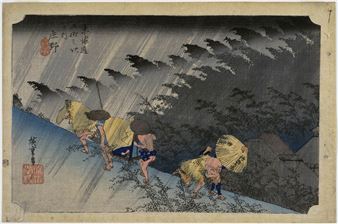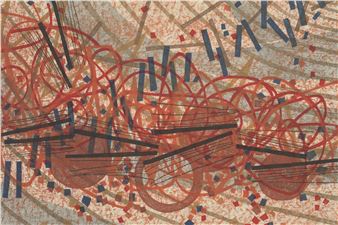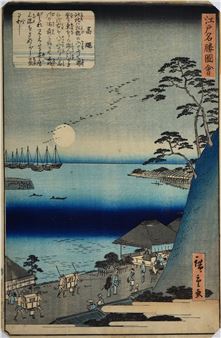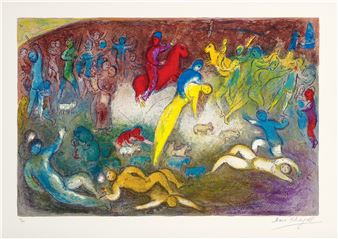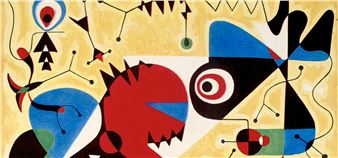Lyrically Rebellious: The Prints of Onchi KЕҚshirЕҚ
This exhibition celebrates the accomplishments of Onchi KoshirЕҚ (1891вҖ“1955), the leader of the sЕҚsaku hanga (Creative Prints) movement and JapanвҖҷs first abstract artist.
The Japanese word sЕҚsaku, often translated as вҖңcreativity,вҖқ more accurately means вҖңinnovationвҖқ or вҖңthe invention of something entirely new.вҖқ This concept was largely absent from the production of ukiyo-e prints throughout the Edo period (1615вҖ“1868), in which printmaking duties such as carving, inking, and printing were delegated to specialists to maximize the craftsmanship and volume of prints designed in a predetermined, standardized style. At the beginning of the 20th century, as Japan was inundated with new Western artistic approaches such as etching, lithography, and photography, woodblock print designers needed a way to revitalize their medium. Emulating precedents in Europe and America, they demanded that modern prints (Japanese: hanga) be produced by a single artist working independently and without assistance, thereby imbuing each image with the uniqueness of a painting.
As the leader of this printmaking revolution, Onchi explored particularly challenging territory. Inspired by avant-garde artists in the West, he produced abstract prints that addressed profound philosophical concerns: how do we depict a subject that we cannot see, such as a passage of music? If a visual artist were to draw from the same creative wellspring as the composer of a symphony, then what shape and color would best represent an emotion like sorrow or despair? Over the course of his career, Onchi invented an entire visual language in response to these questions. Some of his most enthusiastic patrons were Americans, including the Honolulu-based collectors and donors James Michener (1907вҖ“1997) and Oliver Statler (1915вҖ“2002). As a result, the Honolulu Museum of Art came to possess the largest collection of prints by Onchi outside of Japan.
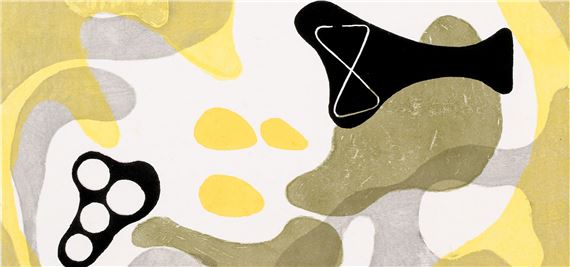
Recommended for you
This exhibition celebrates the accomplishments of Onchi KoshirЕҚ (1891вҖ“1955), the leader of the sЕҚsaku hanga (Creative Prints) movement and JapanвҖҷs first abstract artist.
The Japanese word sЕҚsaku, often translated as вҖңcreativity,вҖқ more accurately means вҖңinnovationвҖқ or вҖңthe invention of something entirely new.вҖқ This concept was largely absent from the production of ukiyo-e prints throughout the Edo period (1615вҖ“1868), in which printmaking duties such as carving, inking, and printing were delegated to specialists to maximize the craftsmanship and volume of prints designed in a predetermined, standardized style. At the beginning of the 20th century, as Japan was inundated with new Western artistic approaches such as etching, lithography, and photography, woodblock print designers needed a way to revitalize their medium. Emulating precedents in Europe and America, they demanded that modern prints (Japanese: hanga) be produced by a single artist working independently and without assistance, thereby imbuing each image with the uniqueness of a painting.
As the leader of this printmaking revolution, Onchi explored particularly challenging territory. Inspired by avant-garde artists in the West, he produced abstract prints that addressed profound philosophical concerns: how do we depict a subject that we cannot see, such as a passage of music? If a visual artist were to draw from the same creative wellspring as the composer of a symphony, then what shape and color would best represent an emotion like sorrow or despair? Over the course of his career, Onchi invented an entire visual language in response to these questions. Some of his most enthusiastic patrons were Americans, including the Honolulu-based collectors and donors James Michener (1907вҖ“1997) and Oliver Statler (1915вҖ“2002). As a result, the Honolulu Museum of Art came to possess the largest collection of prints by Onchi outside of Japan.
Artists on show
Contact details


 ARTISTS
ARTISTS








